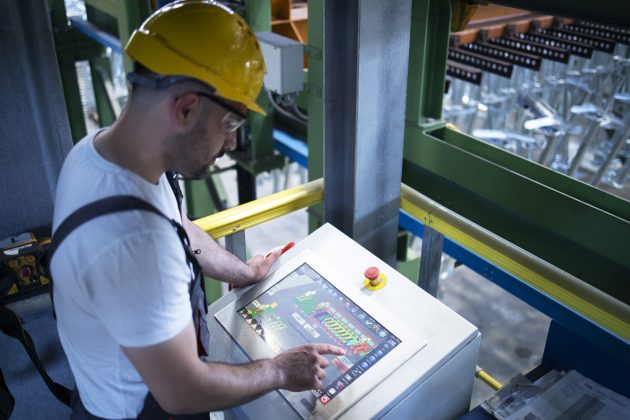
How to improve collaboration between maintenance planners and production planners
by Bryan Christiansen, Founder and CEO of Limble CMMS
The modern production floor consists of diverse production assets that generate and rely on data for their operations.

Factory worker monitoring industrial machines and production remotely in control room. (Credit: freepik aleksandarlittlewolf)
Maintenance planners and production planners are two sides of the same coin. They influence workflows by establishing and enforcing critical schedules. Maintenance planners guarantee the availability and reliability of production assets while production planners generate plans for optimum utilization of production equipment. These professionals must read from the same page to prevent backlogs in production, minimize resource waste, lower the cost of production, enhance safety standards and compliance. How can companies improve collaboration between these planners?
Centralize Data Management
The modern production floor consists of diverse production assets that generate and rely on data for their operations. Production planners monitor production patterns, paying close attention to the productivity of each piece of equipment. They evaluate prevailing market demands or the conditions of the supply chains and adjust production schedules accordingly. Maintenance planners continuously monitor equipment for defects through inspections and by analyzing data collected by condition-monitoring sensors.
Production and maintenance planning is dynamic. As companies adopt innovative production technologies, access to accurate data is becoming inevitable. Even so, there are multiple types of data that companies collect daily using a decentralized management system. It leaves the production department grappling with production data alone with little or no attention to maintenance data. The inverse is also true, leading to clashes in schedules.
Implement Technological Solutions
Digital transformation is continually reshaping operations and collaborations in facilities. Companies share information in real-time and can reach several people at once. It means that production and maintenance planners can relay information on last-minute changes to shop floor personnel to ensure continuity of production processes.
Maintenance planners rely on CMMS solutions sometimes to automate maintenance planning. These programs store detailed maintenance logs for every asset and help planners optimize schedules, allocate work to technicians and reconcile maintenance inventories. Companies are developing production planning software to improve resource and staff allocation, track production processes and evaluate equipment utilization rates.
Both solutions are vital for lean manufacturing and total productive maintenance (TPM). Companies distribute these solutions on mobile devices for cross-referencing by maintenance and production planners.
Conduct Unified Staff Training
It is easy for production teams to blame maintenance teams for the failure of equipment. A production planner expects assets to be available, reliable and effective throughout the production cycle. Unfortunately, maintenance planners have to deal with unforeseen emergencies. Such situations may lead to blaming games and poor relationships between planners. While each department has a training plan for their personnel, companies should establish unified training programs for maintenance and production planners.
Through this training, the company communicates the differences in the responsibilities of each team and the benefits of teamwork. It lays down the rules of engagement between planners and establishes appropriate channels for resolving misunderstandings, identifying and reporting operational challenges.
Establish and Continuously Update Key Performance Indicators
Teams work better and in unison if they have a common goal and a uniform way to evaluate progress. Key performance indicators (KPIs) create a sense of belonging among planners and eliminate unwarranted competition that leads to inter-departmental clashes. By using KPIs, companies define the roles of each department, strengthening the mutual relationship between planners. When establishing KPIs, ensure fair distribution of duties and awards for milestones achieved. Avoid using ambiguous statements that can cause misunderstanding.
Seamless collaboration between maintenance and production planners is essential since they make decisions that affect daily operations. Improving collaboration is a continuous process that requires innovative and selective integration of technology and management best practices. Companies should invest in capacity building to cultivate a culture of teamwork among planners and equip them with sufficient skills to exploit modern tools and technology for better service delivery.
Limble is a mobile CMMS software that takes the stress and chaos out of maintenance by helping managers organize, automate, and streamline their maintenance operations.